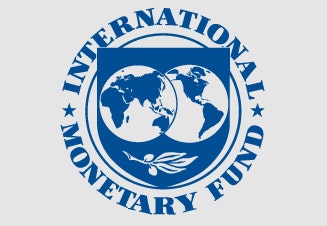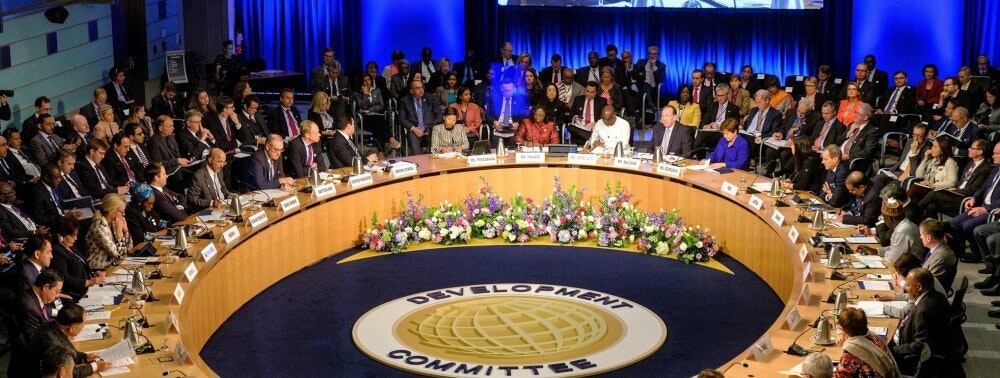Nick Goold
The World Bank and the International Monetary Fund (IMF) are two of the most prominent international financial institutions that promote global economic development and financial stability.
The World Bank, headquartered in Washington, D.C., was established in 1944 to finance post-war reconstruction and promote economic development in member countries. The International Bank for Reconstruction and Development (IBRD) and the International Development Association (IDA) are its main institutions.
The IBRD provides loans and other financial assistance to middle-income and creditworthy low-income countries, while the IDA provides concessional loans and grants to the world's poorest countries. The main goals of the World Bank are to reduce poverty, spread prosperity, and encourage economic growth and development that will last.
The IMF, on the other hand, was established in 1944 to promote international monetary cooperation and ensure the stability of the international monetary system. It is also headquartered in Washington, D.C., and comprises 190 member countries. The IMF's primary functions include providing financial assistance to member countries experiencing balance of payments difficulties, promoting international monetary cooperation and exchange rate stability, and providing policy advice and technical assistance to member countries on economic issues.

The World Bank and the IMF significantly impact global economic and financial conditions, and their policies and actions can have important implications for individual countries and the global economy. Some of the critical roles and functions of the World Bank and IMF include the following:
Financing and lending
Both organizations give loans and other financial help to member countries to help their economies grow and fix problems with their balance of payments.
Policy advice and technical assistance
Both organizations help member countries with macroeconomic stability, fiscal and monetary policy, and structural reforms by giving policy advice and technical help.
Capacity building and knowledge sharing
Both institutions work to build institutional capacity and promote knowledge sharing among member countries to support economic development and promote poverty reduction.
Crisis management
In times of financial crisis or economic instability, both institutions can play a crucial role in helping to stabilize economies and restore confidence in financial markets.
Governance
A board of governors governs the World Bank and the IMF, the highest decision-making body in each organization. The World Bank's and the IMF's leadership is determined through a selection process that involves consultation with member countries. The Executive Board appoints the Managing Director of the IMF for a five-year term that is also renewable. At the same time, the Board of Directors appoints the President of the World Bank for a five-year period that is also renewable. The selection process is typically based on a combination of factors, including the candidate's experience and qualifications and the needs and priorities of member countries.

Membership & Funding
The International Monetary Fund (IMF) has 190 member countries as of 2023. All United Nations member states are eligible to become members of the IMF, and the organization has established procedures for admitting new members.
The most prominent members of the IMF in terms of their quota contributions and voting power are the United States, Japan, China, Germany, France, the United Kingdom, India, Italy, Russia, and Brazil. These countries, along with a few others, collectively have a significant influence on the decision-making processes of the IMF.
However, all member countries have an equal voice in the IMF's General Assembly, where major policy decisions are made. The IMF also has several executive boards, committees, and departments responsible for carrying out its day-to-day operations and implementing its policies and programs.
The International Monetary Fund (IMF) is funded primarily through contributions from its member countries, which are required to provide financial resources to the IMF in proportion to their economic size and strength. These financial contributions are known as "quotas" and are periodically reviewed to ensure they reflect global economic changes.
In addition to quotas, the IMF can borrow funds from the international capital markets or from its member countries through various financing arrangements. For example, the IMF has set up several lending facilities, such as the Extended Fund Facility (EFF), the Standby Credit Facility (SCF), and the Rapid Financing Instrument (RFI), that give different kinds of financial help to countries that are having trouble with their economies.
The IMF can also generate income through its financial resources, such as lending operations or investments. The quotas its member countries pay continue to be the IMF's primary funding source, though.
Special Drawing Rights (SDRs)
Special Drawing Rights (SDRs) are an international reserve asset created by the International Monetary Fund (IMF) to supplement the existing official reserves of its member countries. The value of SDRs is based on a basket of major currencies, including the U.S. dollar, euro, Japanese yen, British pound, and Chinese renminbi. The SDR basket is reviewed every five years to ensure that it reflects the relative importance of currencies in the global economy.
Countries can borrow SDRs from the IMF as a form of financing in times of economic crisis or to support their balance of payments. The IMF typically provides SDR loans to countries experiencing a shortage of foreign exchange reserves or facing external financing gaps. SDR loans are generally considered more stable and less subject to currency risk than loans denominated in a single currency.
Repayment terms for SDR loans from the IMF are typically determined case-by-case, considering a country's specific circumstances and needs. Repayments are made in various ways, including using SDRs, other currencies, or providing goods and services. The IMF may also give countries a grace period before they are required to repay their loans to provide them with time to implement economic reforms and stabilize their economies.
Overall, the SDRs and IMF loans system is an important way for countries with economic problems or problems with their balance of payments to get money and stay stable. By giving loans in SDRs, the IMF helps lower currency risk and stabilize the world's economy.

